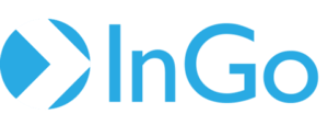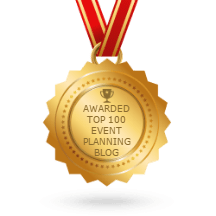
This is a guest post from Carsten Pleiser, Senior Sales Director, EMEA, at InGo Certified Partner etouches.
In our second edition of Creative Communication for Your Event, we are taking you through a few other creative ways to market your event. Instead of just going through information for your website and email marketing, we are going to dive deeper into your registration, networking, on-site communication and surveys. The most important thing to keep in mind is that this communication needs to appeal to your audience. Step in their shoes and think of what you would look for from an event in terms of communication.
Lets go into four more areas to perfect for your event communication:
Pre-Event Registration
So far so good. Website is live, emails are created and the communication plan is set-up. You can now focus on the registration.
- Where possible, pre-load your registration form either from your existing databases, previous registrations, CRM systems such as Salesforce, or directly from your marketing mailing list. If you don’t have a list or you’re not using CRMs, allow your attendees to use their social profiles on LinkedIn or Facebook to register. Social Sign-On can help to create a nice and seamless experience and a quicker registration as attendees don’t have to re-enter all of their personal details.
- Keep the registration short, but also ask the right questions. Standard questions about special requirements are very common, but have you also considered allowing attendees to upload a picture for their badge or asking them what they are most interested in or why they are attending your event? The data collected in the registration can give you valuable insights to address your attendees’ needs and empower future engagement.
- Make registration paths individual to your attendee’s category, e.g. a speaker might have a different set of questions as a staff member or delegate.
- Registration pages should be mobile friendly, allowing your attendees to register from their smartphone or tablet at any time without effort.
- On the final page of the registration process, add a thank you message for your registrants. Allow them to add the event to their calendar. Encourage them to spread the word within their social network. Tools like InGo an help extending your reach and growing your audience simply by utilizing your attendee’s social network.
- Promote and encourage your attendees to download your event app as early as possible. This can help increase usage and engagement even before the event has started.
- Personalize your confirmation emails for each attendee and don’t just send generic templates. Encourage social sharing and send relevant information (invoice, badge, barcode) attached as links or merge fields.
- Hopefully there are not too many, but ensure you track incomplete registrations. Trigger an email to each of those attendees and offer help or assistance if necessary. Track at which stage the attendee has left the registration. This can be a good indicator as you might need to make slight adjustments to make the reg process easier.
Pre-Event Networking
Networking & matchmaking tools can help you plan and offer quality networking experiences for your attendees. No matter if you’re planning a topic-based roundtable session or planning a conference with dedicated networking areas and times.
You can collect participant interest from the registration and based on that set-up session groups with the same interest. Or you can suggest buyers to meet potentially interesting suppliers.
Again, your networking should be seamlessly integrated with your registration so that attendees don’t have to register on separate platforms.
During the Event / On-Site
The day of the event has come.
An event app can be useful, if you have previously decided upon the objectives and are clear about the features and specs you require. Event apps can help you contribute to your communication strategy success. If you need some inspiration below are a few ideas:
- Allow your attendees to share images with their social networks or following your feed and send messages to each other.mobile app
- Share speaker slides with the audience, but limit the advancing of the slide not beyond the current speaker slide.
- Use push notification to send last-minute announcements to attendees, e.g. change of agenda, reminders of dinners etc.
- Use geo-fencing features of your app to send a welcome notification when attendee enters venue (geofencing)
- Use audience engagement tools such as polling and Q&A during sessions to create further interaction and engagement.
- Facilitate networking and meeting opportunities between attendees or vendors and buyers. This can also be pre-event through social networking and matchmaking tools.
- Allow your attendees to ask questions to speakers to increase engagement and social media opportunities
- Brand your event app accordingly and include sponsor logos to increase their ROI.
- Facilitate gamification, e.g. scavenger hunt in which attendees have to find QR codes or iBeacon signals spread out across the event and where they receive a badge or reward when x items have been found. This is incredibly useful for exhibition and create value for your exhibitors as it generates traffic to booths.
Event apps are constantly evolving and it’s important that you know what you want to achieve. Don’t just use apps, because your competitor does make sure you think about what your attendees need on the app and create it accordingly.
Post-Event Surveys
Once the event has finished, you can send the post event surveys. A good time frame is either at the closing session of the event OR 2-3 days after the event when attendees are back at the offices and have time to complete.
- Avoid surveys longer than 5 minutes
- Reward attendees that complete the survey by giving them access to premium content.
- Brand your survey accordingly and make user friendly.
- Link the survey directly to the registration record so that attendees don’t have to re-enter their personal details.
- Ask attendees to rate your speakers, sessions & venues, what they’ve learned and also engage them and ask for suggestions for additional improvements for future events.
Your attendees are your most valuable asset and the information they provide is most vital for the on-going success of your event.
Key Take-Aways
- Your attendees are your biggest asset and its important you target your communication appropriately and ensure their objectives are met. So think about what communication would be useful for your stakeholders to receive.
- Ensure you have brand consistency across email invitations, event website/landing page, registration pages, networking portals and surveys.
- Ensure your registration site is mobile friendly / responsive so they can register on multiple devises in a quick and efficient way. Make sure if you are using an Event App you are clear of what you require this application to do. Testing in advance is key.
I hope this gives you a few ideas for your next event. Don’t forget to refer back to my first post on how to bump up creative communication for your event website and email marketing. Any questions or comments, I’m keen to hear from you.


